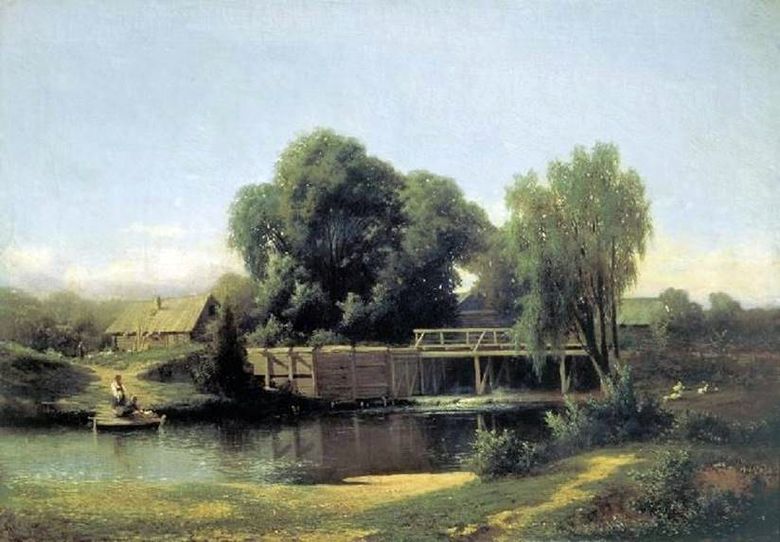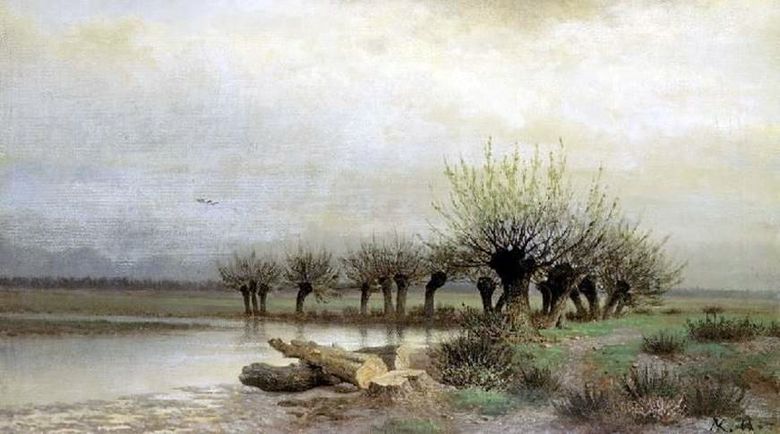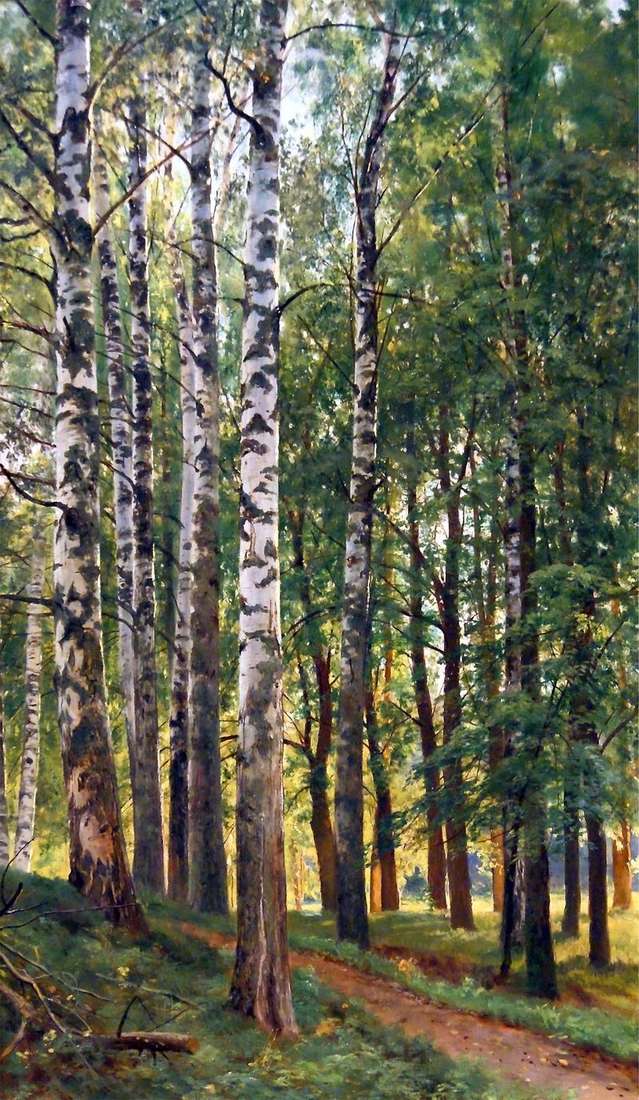
Among the landscape painters of the second half of the XIX century, Lev Kamenev remains until now an artist with little studied. Many of his works have not been revealed to this day. But this does not detract from its significance and does not weaken interest in the artist, who had a special creative individuality and his own language of painting. In the landscapes created by him, the impressionable soul of the artist-poet who subtly felt the beauty of his native nature comes to life. His paintings are attracted by depicted motifs, poetry, they have to contemplate and peace of mind.
The artist is a continuer of the Savrasovsky landscape of the 50s of the XIX century. The connection with AK Savrasov is not accidental. In 1853, when he was already an adult, LL Kamenev entered the Moscow School of Painting, Sculpture and Architecture. In the beginning, he is engaged under the leadership of KI Rabus, and then AK Savrasov, who immediately noted the exceptional talent of his pupil. And in 1863 LL Kamenev as a strong young painter in painting was sent to Germany.
He spent two years abroad. Working in Munich and Dusseldorf, he often went to Switzerland. The date “1864” on the landscape “At the dam” returns to the artist’s lifetime in Germany. Reproduced full-scale motif on the overall impression of comfort and costumes of women standing on the bridges of the dam indicates that he was written abroad. This is confirmed by the fact that in 1864 LL Kamenev settled in Kassel to work in the Teutoburg Forest, where nature “in some ways resembles the Russian.” This he wrote to I. I. Shishkin.
In the landscape “At the dam” you can see great observation and serious work on the nature. The artist depicts a simple and modest motif. It is simplicity and naturalness that are a characteristic feature of his landscapes. A quiet, cloudless sky, occupying most of the landscape, conveys tranquility and silence. The dam, depicted in the center, hidden by the crowns of trees, the shimmering dam show the past of active life. This is also reminiscent of a house standing at a distance. In the picture everything lives an independent life and at the same time is subordinated to the general laws of being.
The landscape suggests the changes in life in time and at the same time gives rise to meditation about the eternal fate of nature, subject to human intervention. L. L. Kameneva can be called a subtle and heartfelt poet of Russian nature. He was the spokesman of landscape-mood. The landscapes created by him have not lost their charm even today. His paintings are attracted by the poetry and variety of the natural states discovered in them. L. Goncharova, M. Kovalev, N. Pomerantsev. “Kostroma State Unified Art Museum”. White City, 2002
 Spring by Lev Kamenev
Spring by Lev Kamenev Au barrage – Lev Kamenev
Au barrage – Lev Kamenev En la presa – Lev Kamenev
En la presa – Lev Kamenev Moonlit Night on the River by Lev Kamenev
Moonlit Night on the River by Lev Kamenev Printemps – Leo Kamenev
Printemps – Leo Kamenev Birch Grove by Ivan Shishkin
Birch Grove by Ivan Shishkin Pushkin in the Crimea at the Gurzuf rocks by Ivan Aivazovsky
Pushkin in the Crimea at the Gurzuf rocks by Ivan Aivazovsky Early Spring by Konstantin Korovin
Early Spring by Konstantin Korovin